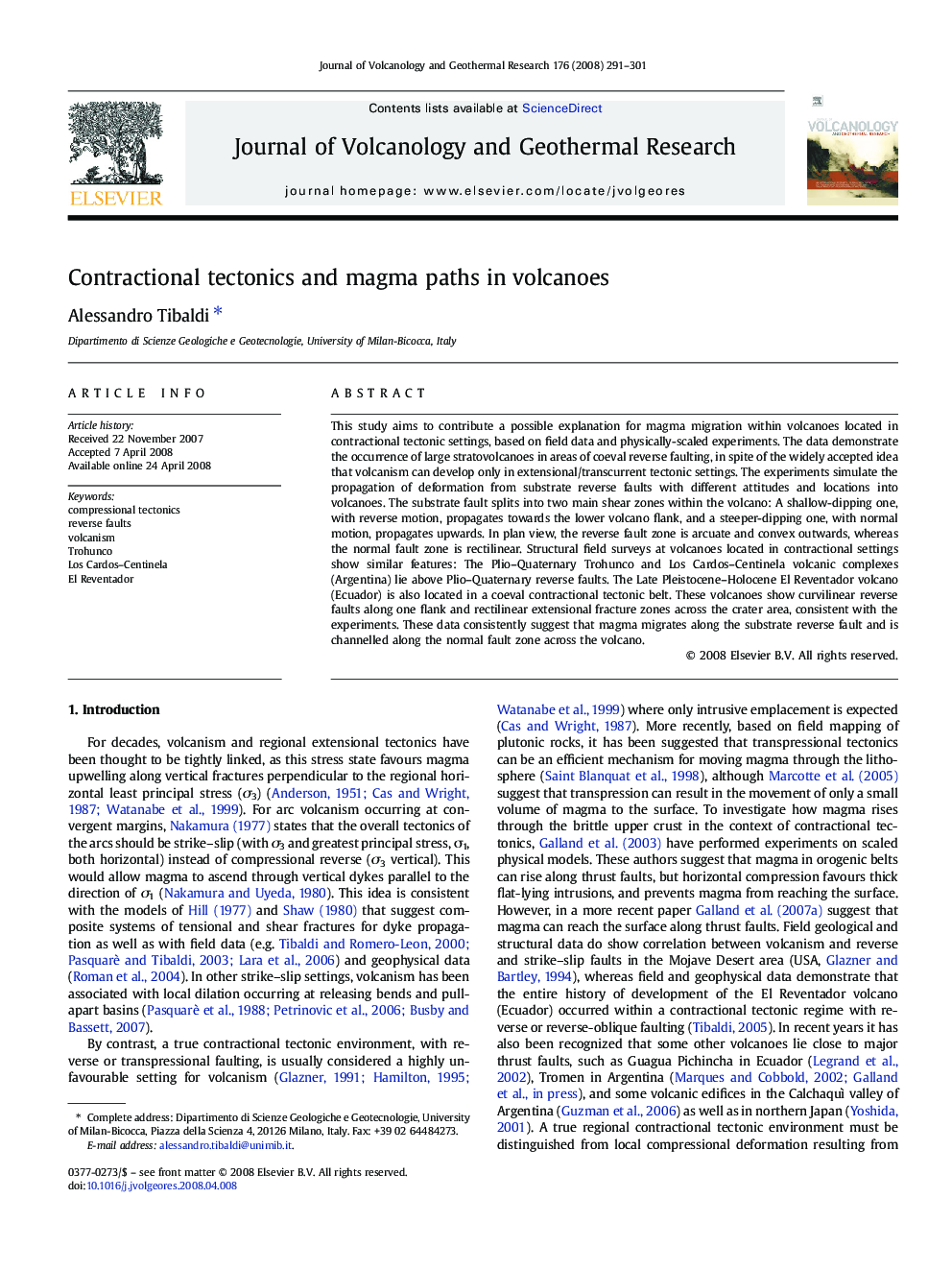| Article ID | Journal | Published Year | Pages | File Type |
|---|---|---|---|---|
| 4715270 | Journal of Volcanology and Geothermal Research | 2008 | 11 Pages |
This study aims to contribute a possible explanation for magma migration within volcanoes located in contractional tectonic settings, based on field data and physically-scaled experiments. The data demonstrate the occurrence of large stratovolcanoes in areas of coeval reverse faulting, in spite of the widely accepted idea that volcanism can develop only in extensional/transcurrent tectonic settings. The experiments simulate the propagation of deformation from substrate reverse faults with different attitudes and locations into volcanoes. The substrate fault splits into two main shear zones within the volcano: A shallow-dipping one, with reverse motion, propagates towards the lower volcano flank, and a steeper-dipping one, with normal motion, propagates upwards. In plan view, the reverse fault zone is arcuate and convex outwards, whereas the normal fault zone is rectilinear. Structural field surveys at volcanoes located in contractional settings show similar features: The Plio–Quaternary Trohunco and Los Cardos–Centinela volcanic complexes (Argentina) lie above Plio–Quaternary reverse faults. The Late Pleistocene–Holocene El Reventador volcano (Ecuador) is also located in a coeval contractional tectonic belt. These volcanoes show curvilinear reverse faults along one flank and rectilinear extensional fracture zones across the crater area, consistent with the experiments. These data consistently suggest that magma migrates along the substrate reverse fault and is channelled along the normal fault zone across the volcano.
